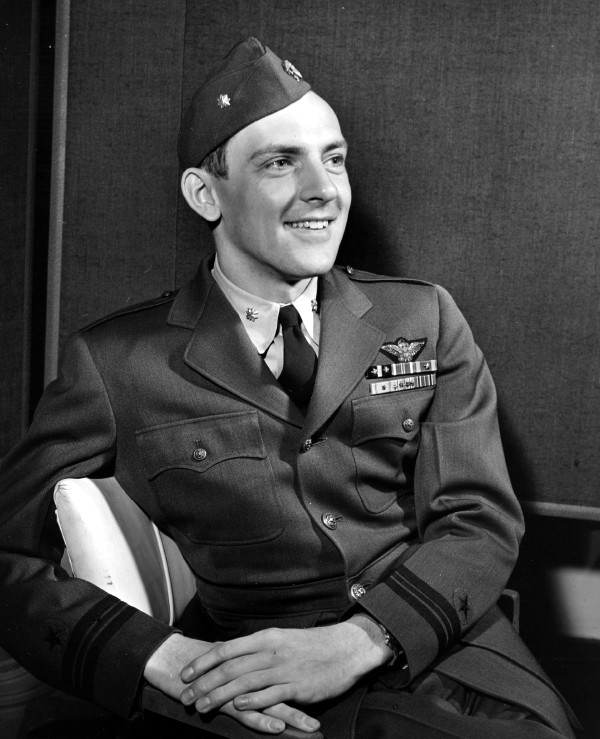Search Registry
Disclaimer: Information in the Registry is unofficial and not intended as a substitute for any official government record of military service.
Norman A. Sterrie |
|
| Born | Nov. 14, 1911, St. James, MN |
| Gender | Male |
| Parents | |
| Schools Attended | |
| Branch of Service | Navy |
| Additional Identifiers | Commissioned or Warrant Officer Reserves |
| Service Timeframe | 1939 - 1959 |
| War/Conflict | World War Two 1939-1945 |
| Principal Units and Locations | |
| Military Awards and Decorations | Three Navy Flying Crosses Three Air Medals Distinguished Flying Cross |
 Norman Sterrie at the end of the war, 1945. | |
NarrativeShortly after graduating from college in 1939, Capt. Norm Sterrie enlisted in the U.S. Navy. He earned his gold Naval Aviator wings in June 1940 at the Naval Air Station in Pensacola, Florida. Sterrie had an exemplary flying record as a naval aviator during World War Two. He began his wartime service flying TBM Devastator dive bombers. The first of his three Navy Crosses was earned on March 10, 1942, while serving on the USS Lexington (CV-2) as a member of Torpedo Squadron Two. The medal was awarded for participating in an attack that resulted in the sinking of at least one Japanese warship. His second Navy Cross came less than two months later during the Battle of the Coral Sea when, on May 8, 1942, he led an attack that severely damaged a Japanese aircraft carrier, contributing to its destruction. During that battle, the Lexington was so critically damaged that Sterrie was forced to abandon ship with the rest of the crew and the carrier was scuttled at sea. Sterrie had been among the last pilots managing to land his plane on deck, in the midst of heavy fighting. After the loss of the original Lexington, he was reassigned to a new carrier bearing the same name USS Lexington (CV-16). Sterrie's third Navy Cross was awarded two years later during the First Battle of the Philippine Sea on June 20, 1944. Now a Lieutenant Commander, Sterrie was flying a TBM Avenger and was in charge of Torpedo Squadron Sixteen. He led an attack on the Japanese carrier Shokaku and achieved a direct hit which aided materially in its sinking. Ironically, the Shokaku had contributed to the destruction of Sterrie’s first carrier, Lexington (CV-2) two years earlier. The battle, known as the “Great Marianas Turkey Shoot,” destroyed over 600 Japanese aircraft. His other awards include the Distinguished Flying Cross and three Air Medals. After the war, he served with the U.S. Naval Reserve until 1959, retiring as an O6 Navy Captain. While in the Reserves, Sterrie enrolled in the University of Minnesota Medical School. He became a pediatric allergist and later was instrumental in establishing the Park Nicollet Medical Center. He passed away on December 31, 2008, at the age of 97 and is buried at Mount Hope Cemetery in St. James, Minnesota. | |
